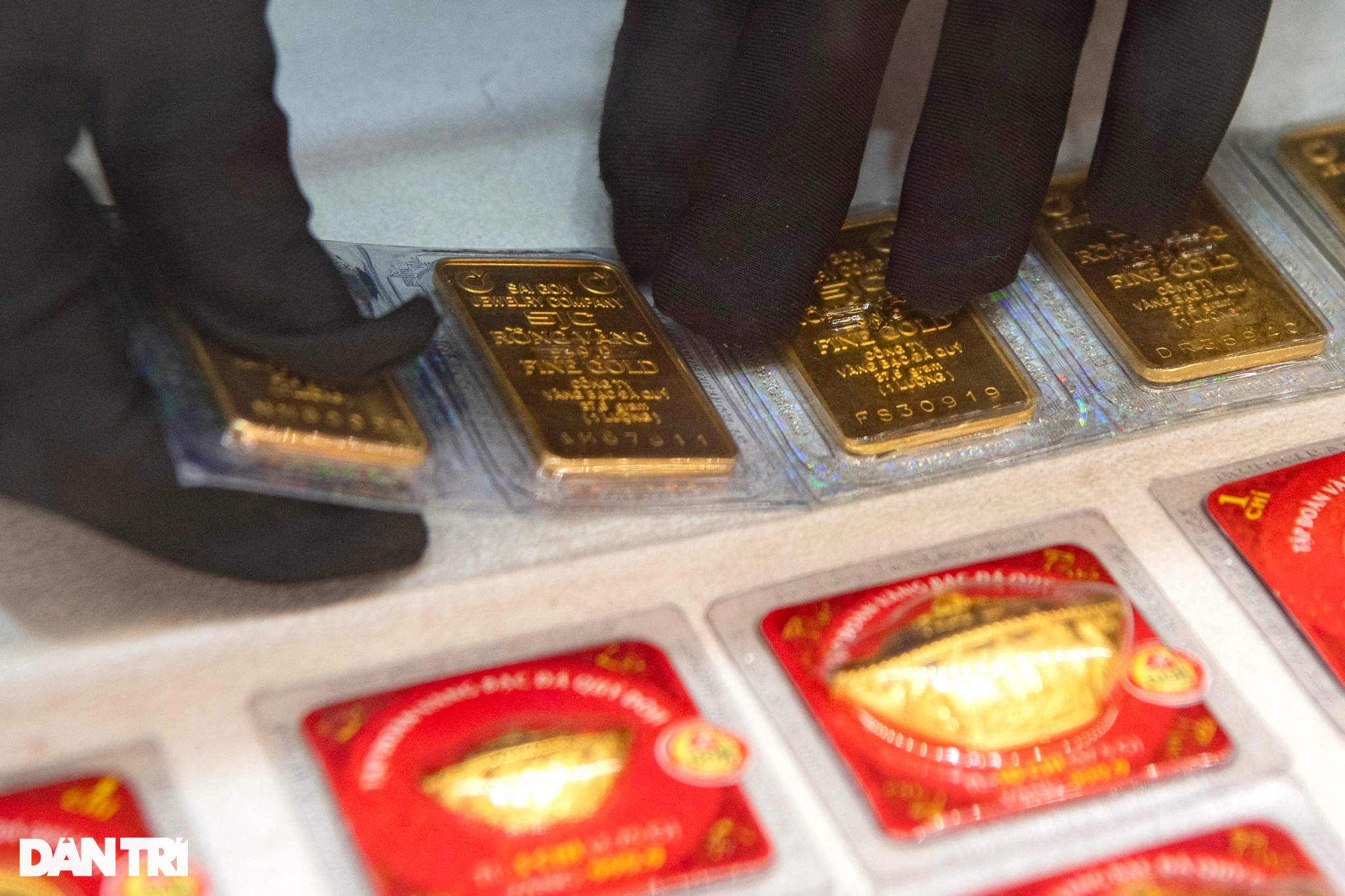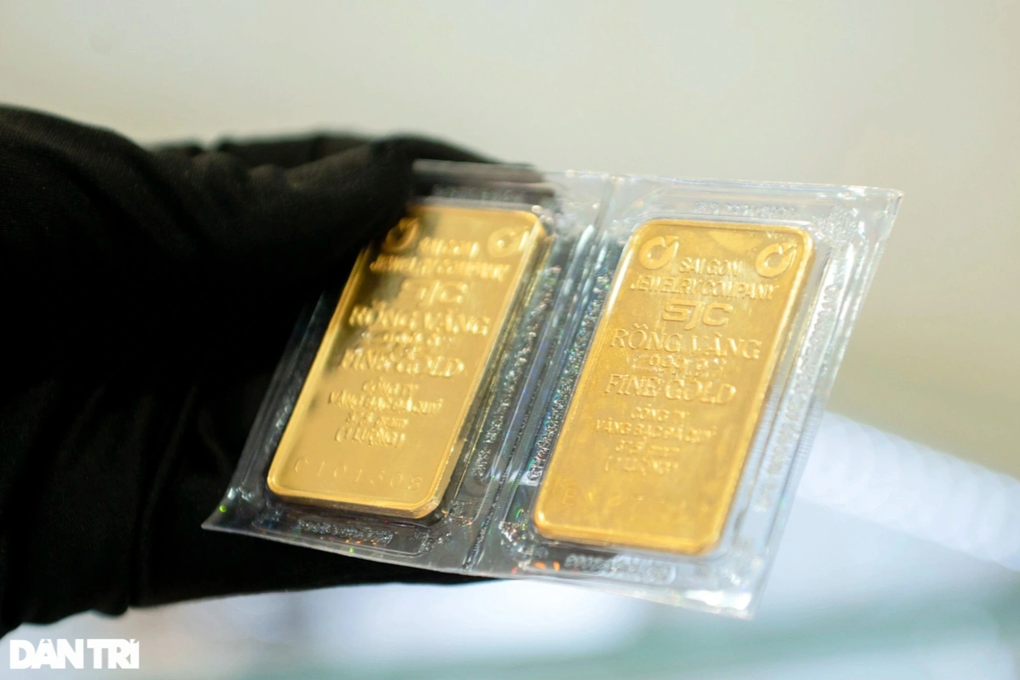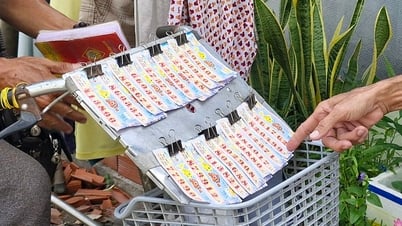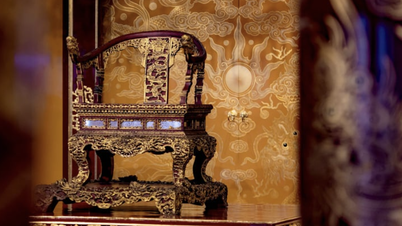At a working session with the Central Policy and Strategy Committee on mechanisms and policies for effective management of the gold market on May 28, General Secretary To Lam requested to eliminate the monopoly on gold bars in the principle that the State still manages but can grant licenses to many qualified enterprises to participate in production.
In fact, the monopoly on gold bars has existed since Decree 24/2012 was issued. Accordingly, the State Bank became the only entity allowed to produce gold bars, choosing SJC as the national gold bar brand, replacing the previous 9 brands. This mechanism also required banks to stop mobilizing and close gold exchanges.
After more than a decade, the shortcomings of the gold bar monopoly began to become apparent. The gold bar trading network shrank sharply, and the State Bank did not issue additional licenses for production or import of raw materials to businesses for a long time. The difference between domestic and international gold prices at many times was up to 15-20 million VND/tael.
Strict control mechanism is needed to protect consumers.
Many experts over the years have also spoken out in support of paving the way for healthy competition, diversifying supply sources and narrowing the large gap between domestic and world gold prices.
Speaking to reporters, Associate Professor Dr. Nguyen Huu Huan, Lecturer at Ho Chi Minh City University of Economics , said that the proposal to eliminate the monopoly in gold bar production is a step in the right direction, but it needs to be accompanied by a strict control mechanism to protect consumers and stabilize the market.
According to Mr. Huan, any market with a long-term monopoly element will distort the operating mechanism and hinder healthy development. However, eliminating the monopoly on gold bar production cannot be done hastily. “If many businesses are allowed to participate in gold bar production, it is necessary to set very clear conditions on production capacity, liquidity, and especially product quality,” he emphasized.
Mr. Huan cited the situation before 2012, when the gold market was still free and there were many gold bar producers, there was a situation of "under-aged gold", meaning gold was not as pure as announced. Some places even produced only 97-98% gold but still stamped 9999 gold, causing great damage to consumers. The issuance of Decree 24 and the establishment of a monopoly mechanism for gold bar production by SJC were to rectify that situation.
In the current context, if we want to amend Decree 24 to eliminate monopoly, Mr. Huan said that it is necessary to build a new legal framework, in which gold bar production must be considered a conditional business.
“It is impossible for any organization to issue gold bars and then not be obliged to buy them back from the people. That would lead to huge risks in liquidity and market confidence,” he said.

Any market with a prolonged monopoly element will distort the operating mechanism and hinder healthy development (Photo: Manh Quan).
Mr. Huan also said that the State needs to consider mechanisms to mobilize the amount of gold that is in the hands of the people through paying interest to gold depositors. He proposed: “If the State Bank can mobilize gold and pay interest to the people, ensuring both safety and profit, then there will certainly be more people depositing instead of keeping gold at home. Thereby, we can turn the gold resources in the people into investment capital for key infrastructure projects such as metro, airport, and transportation”.
According to Mr. Huan, this will be a solution to "kill two birds with one stone" by both solving the "goldenization" of the economy and the pressure on foreign exchange reserves, and taking advantage of valuable resources from the people to develop the economy.
Need to soon research and establish a gold trading floor
Economist Le Xuan Nghia, member of the National Monetary and Financial Policy Advisory Council, said that the State can eliminate the distinction between gold bars, gold rings... and should only regulate 24K, 18K gold... according to international standards.
The Prime Minister recently assigned the State Bank to study the establishment of a gold trading floor. According to Mr. Nghia, this needs to be studied early and experience in building a gold trading floor in China should be learned.
He pointed out that China has two gold exchanges, including the physical gold exchange and the gold certificate exchange. However, the physical gold exchange is the most active. China has licensed five state-owned commercial banks, four foreign banks and four largest gold and silver trading companies to import from abroad and sell wholesale on the exchange.
He said that Vietnam's gold trading floor should also sell physical gold wholesale to gold businesses, then the businesses will retail to the public. "When there is a floor, there will be a unified price, openness, transparency, and there will be no abuse of monopoly to speculate and manipulate the market," he said.
"State-owned commercial banks and some large commercial banks and some large gold and gemstone companies should be licensed to import gold and trade on the exchange," he proposed.
According to Mr. Nguyen Huu Huan, instead of focusing only on breaking the monopoly, a more fundamental and sustainable direction is to establish a national gold exchange.
“A transparent gold exchange with standardized quality and listing conditions will solve the root of the problem. The reality is that most people do not need to own physical gold, they mainly want to invest in the form of buying low and selling high. When there is an electronic gold exchange, the need to hold physical gold will decrease significantly,” he analyzed.
According to Mr. Nguyen Quang Huy, CEO of the Faculty of Finance and Banking, Nguyen Trai University, to modernize the gold market, Vietnam should aim to establish a National Gold Exchange or integrate gold trading into financial centers and commodity exchanges.
"This is an inevitable development trend in many countries, helping gold escape its role as a mere storage asset and become an investment channel that can be tracked, priced and traded transparently," he said.
If implemented properly, experts believe that the gold trading floor model will contribute to increasing market liquidity, improving accessibility for people and businesses, and creating a foundation for developing gold derivatives, thereby bringing the Vietnamese financial market closer to international standards.

Instead of focusing only on breaking the monopoly, a more fundamental and sustainable direction is to establish a national gold exchange (Photo: Thanh Dong).
Gold bars need to be standardized in weight and traceable.
According to Mr. Nguyen Quang Huy, over the years, the monopoly mechanism for gold bar production has gradually revealed its inappropriateness. Domestic gold prices are always millions of dong per tael higher than world prices, creating distortions and eroding confidence in the fairness and efficiency of the market.
When the market has more supply from reputable brands, gold prices will gradually move closer to international prices, thereby calming speculative and hoarding sentiments, limiting price fevers that do not reflect actual supply and demand.
However, expanding production does not mean loosening management. According to Mr. Huy, to ensure the market operates effectively and transparently, it is necessary to establish a strict monitoring mechanism. Enterprises participating in production must meet strict standards on financial capacity, technology and information transparency.
"Gold bars need to be standardized in terms of weight and symbol, with clear traceability, and the listed price must be public, subject to periodic checks and random inspections. In this model, the State Bank still plays a coordinating, guiding and intervening role when necessary to ensure market stability," he said.

Experts support increasing legal domestic gold supply (Photo: Thanh Dong).
However, he also stressed that there should be no haste. The introduction of gold into official trading must be implemented in a cautious manner, with practical assessment and accompanied by a clear legal framework. Risks such as strong price fluctuations that can affect exchange rates, or the abuse of financial leverage in derivatives trading, must be identified and controlled from the beginning. At the same time, the capacity to monitor technology, data and cash flows must also be upgraded accordingly to avoid unforeseen shocks.
Another equally important issue is how to effectively control gold smuggling across the border - a phenomenon that has persisted due to the large price gap between domestic and international prices. Mr. Huy believes that the most effective approach is to reduce the price gap by increasing the legal supply of gold in the country.
"To do so, it is necessary to consider loosening the controlled gold import limit for qualified banks and businesses. Along with that, flexibly adjusting import taxes and related fees, creating conditions for domestic gold prices to approach international prices," he proposed.
On the other hand, tightening informal channels must also be done synchronously. It is necessary to strengthen coordination between functional forces at the border, combined with the application of digital technology and big data analysis to promptly detect unusual signs in gold circulation. Mr. Huy also proposed using QR code or blockchain technology to trace the origin of gold, to clearly distinguish between official gold and floating gold.
Source: https://dantri.com.vn/kinh-doanh/vang-sap-het-thoi-tau-luon-khi-xoa-bo-the-doc-quyen-20250529155218806.htm































































































Comment (0)